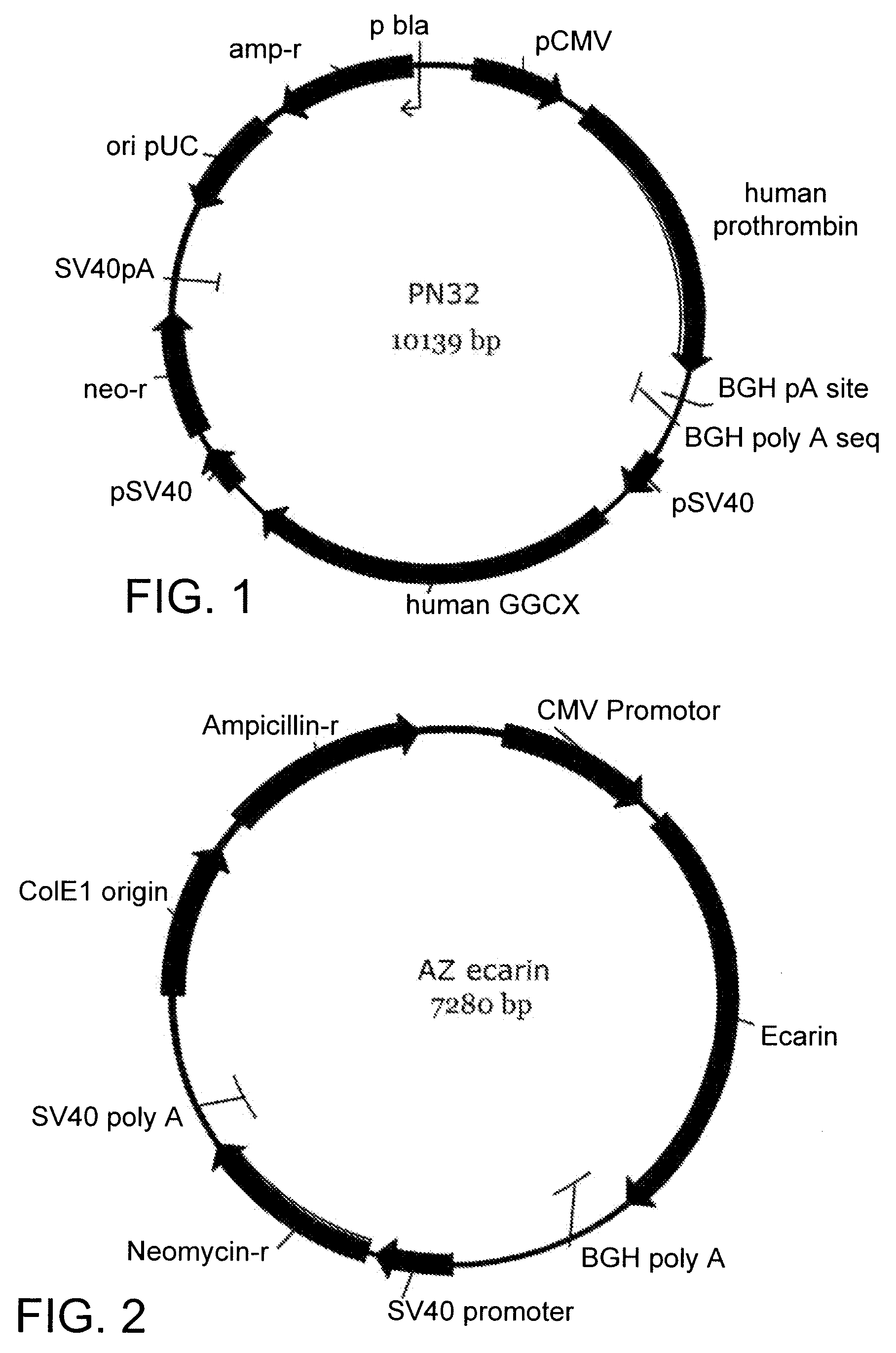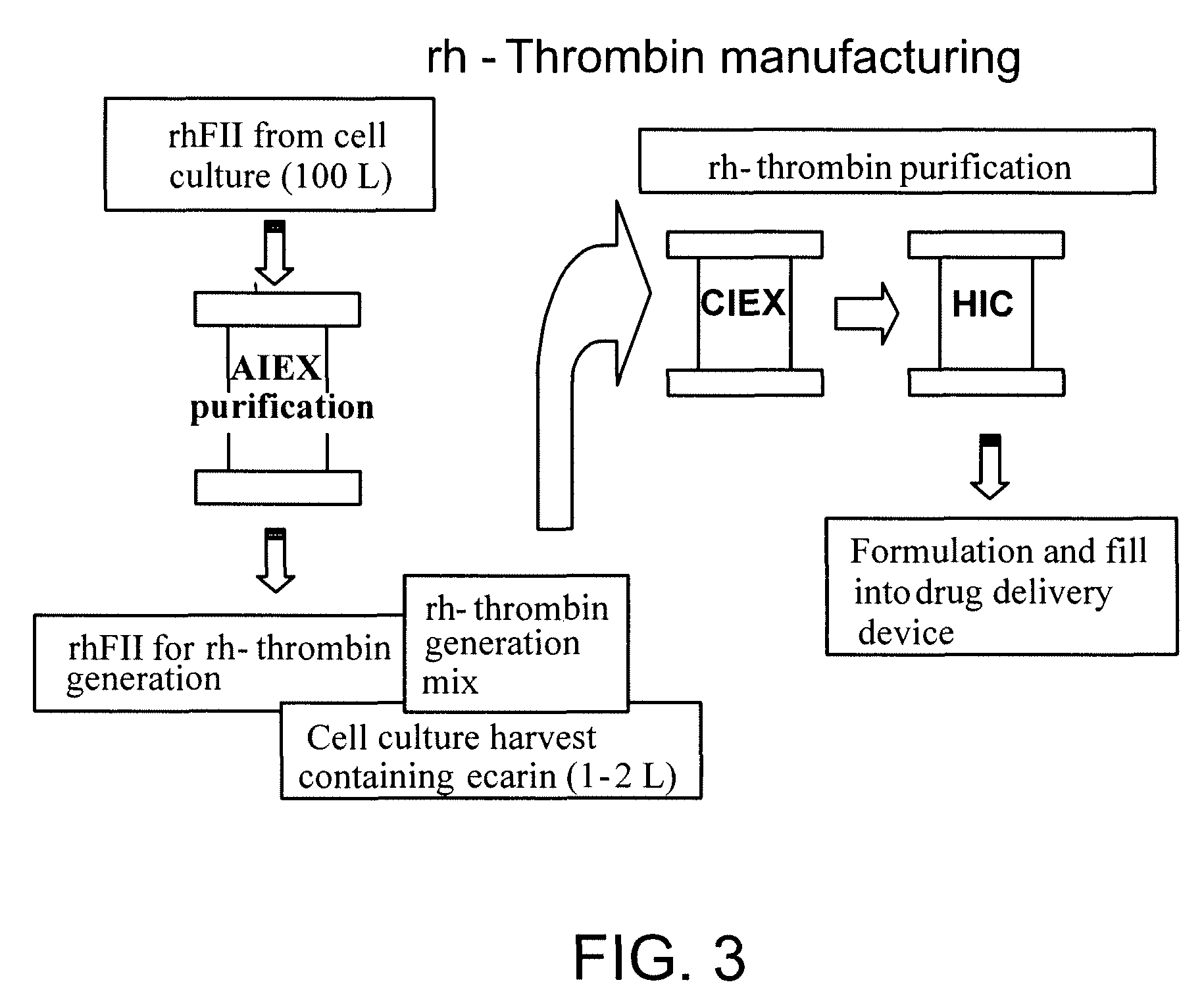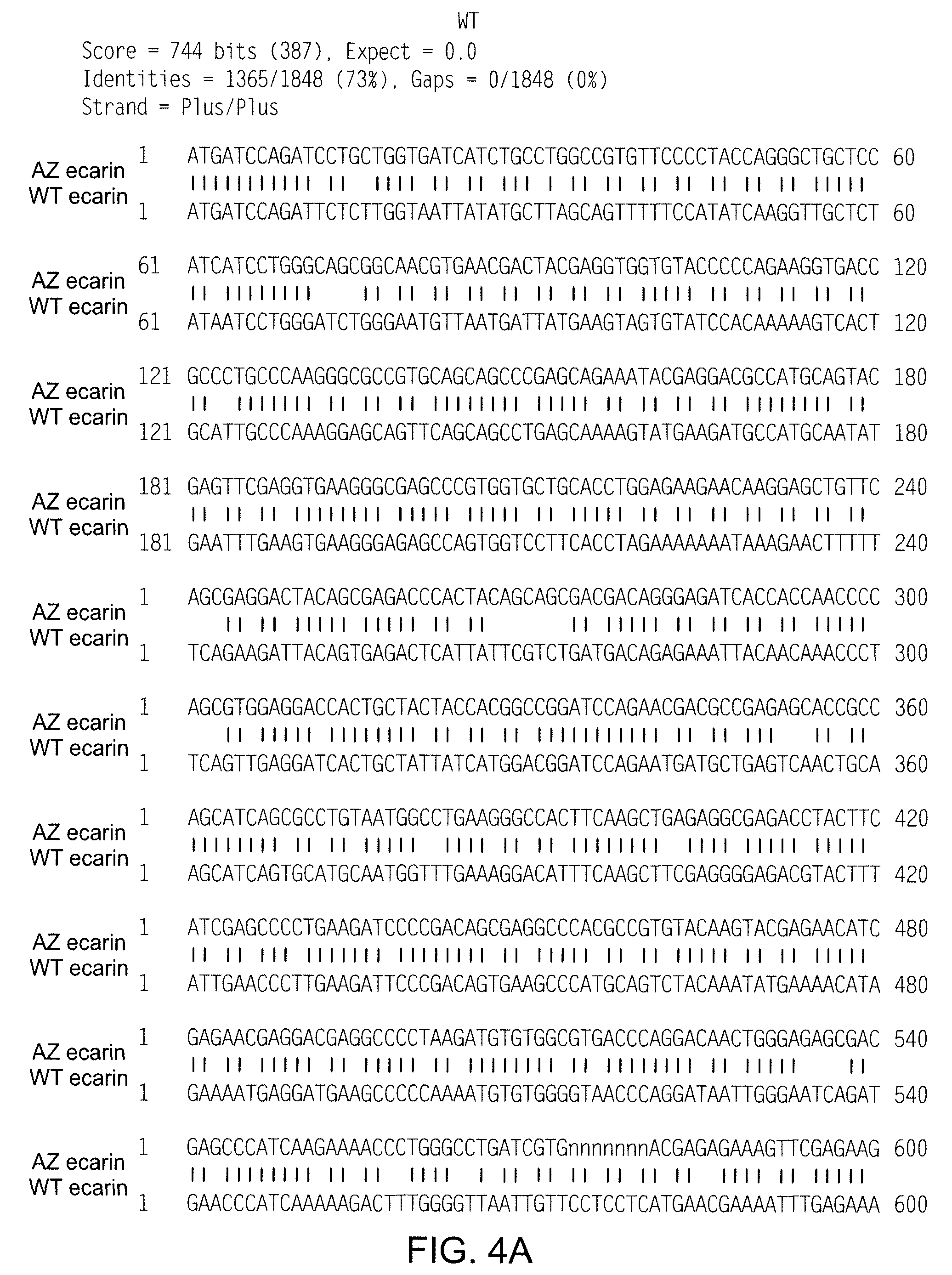Method for production of recombinant human thrombin
a human thrombin and thrombin technology, applied in the field of recombinant human thrombin production, can solve the problems of high yield of prothrombin, risk of virus and prions transmission, and risk of triggering autoantibody formation (bovine products)
- Summary
- Abstract
- Description
- Claims
- Application Information
AI Technical Summary
Problems solved by technology
Method used
Image
Examples
example 1
High Yield Production of Recombinant Human Prothrombin in CHO Cells
[0053]The P1E2 cell line containing the construct PN32 shown in FIG. 1 having the nucleotide sequence SEQ ID NO: 1, was grown in a fermentor according to the method described in WO2005038019, using a protein and animal component free growth medium in order to produce prothrombin for use in thrombin manufacturing. The cells were grown either by batch or perfusion culture methods (Table 1) and the amount of prothrombin produced was measured by an ecarin assay. This ecarin assay was performed essentially as the Chromogenix assay (Mölndal, Sweden) using purified plasma-derived human prothrombin (Haematologic Technologies Inc., Vermont, USA) as standard.
[0054]
TABLE 1Examples of yield of prothrombin in experimental fermentor runsCulture method &Viable cells (millionProthrombinExperiment IDtimecells / mL)mg / LCC2LC (272-8)Batch, 238 h5.9281CC2LD (272-8)Batch, 238 h6.2276326-11BPerfusion, 259 h18722
[0055]The fermentor experimen...
example 2
Production of Recombinant Ecarin in CHO Cells
[0056]An ecarin encoding sequence having the nucleotide sequence SEQ ID NO: 2 optimised for expression in mammalian cells was synthesized and cloned into the Invitrogen vector pCDNA 3.1+ (FIG. 2). An alignment of the nucleotide sequence of the recombinant ecarin used in the present invention to the sequence of wild type ecarin (GI:717090) is seen in FIG. 4. As can be seen in FIG. 5 this recombinant ecarin is 100% homologous to the amino acid sequence for wild type ecarin. This construct, AZ ecarin (SEQ ID NO. 3), was used to stably transfect CHO-S cells (Invitrogen). Ecarin is secreted by the host cell to the extra-cellular space, and in order to screen for ecarin producing clones, culture supernatant samples were removed and mixed with recombinant human prothrombin (rhFII) to a final concentration of 1 mg rhFII / L in assay buffer (50 mM Tris-HCl, pH 7.4 containing 0.1% BSA). This mix was incubated 20-40 minutes at 37° C. The thrombin gene...
example 3
Conversion of Prothrombin to Thrombin by Ecarin
[0059]The ecarin protease converts prothrombin to meizothrombin, an intermediate form of thrombin that has thrombin catalytic activity. Further processing into thrombin is achieved by auto-catalyses. To determine the estimated amount of ecarin culture needed for converting prothrombin into thrombin, we performed a series of test digests. Different amounts of ecarin-containing culture supernatants as obtained in Example 2, were mixed with 1 mg / ml prothrombin (as obtained in example 1) in PBS buffer (Cambrex). Incubation of the mixtures was done at 37° C. for 1-3 hours. Samples were then analysed by SDS-PAGE to identify the amount of recombinant ecarin needed for complete conversion of prothrombin into thrombin. By this procedure we found that the recombinant ecarin was very potent; one liter of ecarin culture supernatant at 7000 U / L is capable of complete conversion of 64 grams of prothrombin into thrombin in less than 3 hours at 37° C. ...
PUM
| Property | Measurement | Unit |
|---|---|---|
| conductivity | aaaaa | aaaaa |
| pH | aaaaa | aaaaa |
| nucleic acid | aaaaa | aaaaa |
Abstract
Description
Claims
Application Information
 Login to View More
Login to View More - R&D
- Intellectual Property
- Life Sciences
- Materials
- Tech Scout
- Unparalleled Data Quality
- Higher Quality Content
- 60% Fewer Hallucinations
Browse by: Latest US Patents, China's latest patents, Technical Efficacy Thesaurus, Application Domain, Technology Topic, Popular Technical Reports.
© 2025 PatSnap. All rights reserved.Legal|Privacy policy|Modern Slavery Act Transparency Statement|Sitemap|About US| Contact US: help@patsnap.com



